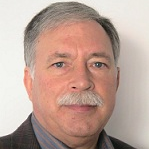Ocean and Coastal Modelling
A special issue of Modelling (ISSN 2673-3951).
Deadline for manuscript submissions: closed (31 October 2021) | Viewed by 18181
Special Issue Editors
Interests: hydrodynamics; morphodynamics; coastal processes; coastal management; marine pollution; waves and currents; storms; natural hazards; climate change; numerical modeling
Special Issues, Collections and Topics in MDPI journals
Interests: harbour and coastal areas; coastal processes; hydrodynamics; waves; numerical modelling; physical modelling; risk management; forecast and risk alert systems for harbour and coastal areas
Special Issue Information
Dear Colleagues,
In spite of the great increase in the number of computational models that are able to solve increasingly complex mathematical formulations, there are still no tools powerful enough to address the numerous real-world problems requiring support through coastal zone planning and management policies.
Concerning hydrodynamics, circulation in the coastal zone is complex, since it is determined by a set of forcing mechanisms of different origins (meteorological, astronomical, circulation on a large scale of the ocean, etc.), which give it considerable space–time variation. Fully nonlinear and dispersive wave models are required to describe the strongly nonlinear dynamics of waves propagating from deep waters through to intermediate-depth waters and the final stages of shoaling and surf zones.
With regard to ocean pollution, the impact of pollutant release in coastal areas from municipal and industrial drainage systems is a global challenge whose processes need to be further developed and better incorporated into numerical modelling. Oil spills in coastal zones also have several effects that are related to changes in the chemical composition of the environment and its physical properties. Numerical models can serve as powerful tools for determining preventive measures and helping to monitor pollutant evolution.
Within the scope of coastal protection, seawalls, groynes, and breakwaters are structures that are often used, namely in protecting or feeding beaches and in protecting sensitive coastal areas, such as ports and harbours. To design coastal defences, understanding the three-dimensional characteristics of the flow around these structures is essential. In this field, the modelling of morphodynamic processes is still a great challenge.
This Special Issue aims to develop and explore modelling tools applicable to the ocean and coastal zone to support researchers in different areas, oceanographers, engineers, and coastal managers. Mathematical developments, numerical implementations, model validations using field and/or laboratory data, and case studies are all of interest.
Prof. Dr. José Simão Antunes Do Carmo
Dr. Conceição Juana Espinosa Morais Fortes
Guest Editors
Manuscript Submission Information
Manuscripts should be submitted online at www.mdpi.com by registering and logging in to this website. Once you are registered, click here to go to the submission form. Manuscripts can be submitted until the deadline. All submissions that pass pre-check are peer-reviewed. Accepted papers will be published continuously in the journal (as soon as accepted) and will be listed together on the special issue website. Research articles, review articles as well as short communications are invited. For planned papers, a title and short abstract (about 100 words) can be sent to the Editorial Office for announcement on this website.
Submitted manuscripts should not have been published previously, nor be under consideration for publication elsewhere (except conference proceedings papers). All manuscripts are thoroughly refereed through a single-blind peer-review process. A guide for authors and other relevant information for submission of manuscripts is available on the Instructions for Authors page. Modelling is an international peer-reviewed open access quarterly journal published by MDPI.
Please visit the Instructions for Authors page before submitting a manuscript. The Article Processing Charge (APC) for publication in this open access journal is 1000 CHF (Swiss Francs). Submitted papers should be well formatted and use good English. Authors may use MDPI's English editing service prior to publication or during author revisions.
Keywords
- deep ocean
- coastal zone
- shallow waters
- hydrodynamics
- turbulence
- ocean pollution
- coastal processes
- morphodynamics
- physical modelling
- numerical modelling
- waves and currents
- finite elements
- finite volumes
- sea level rise
- storms
- tides






